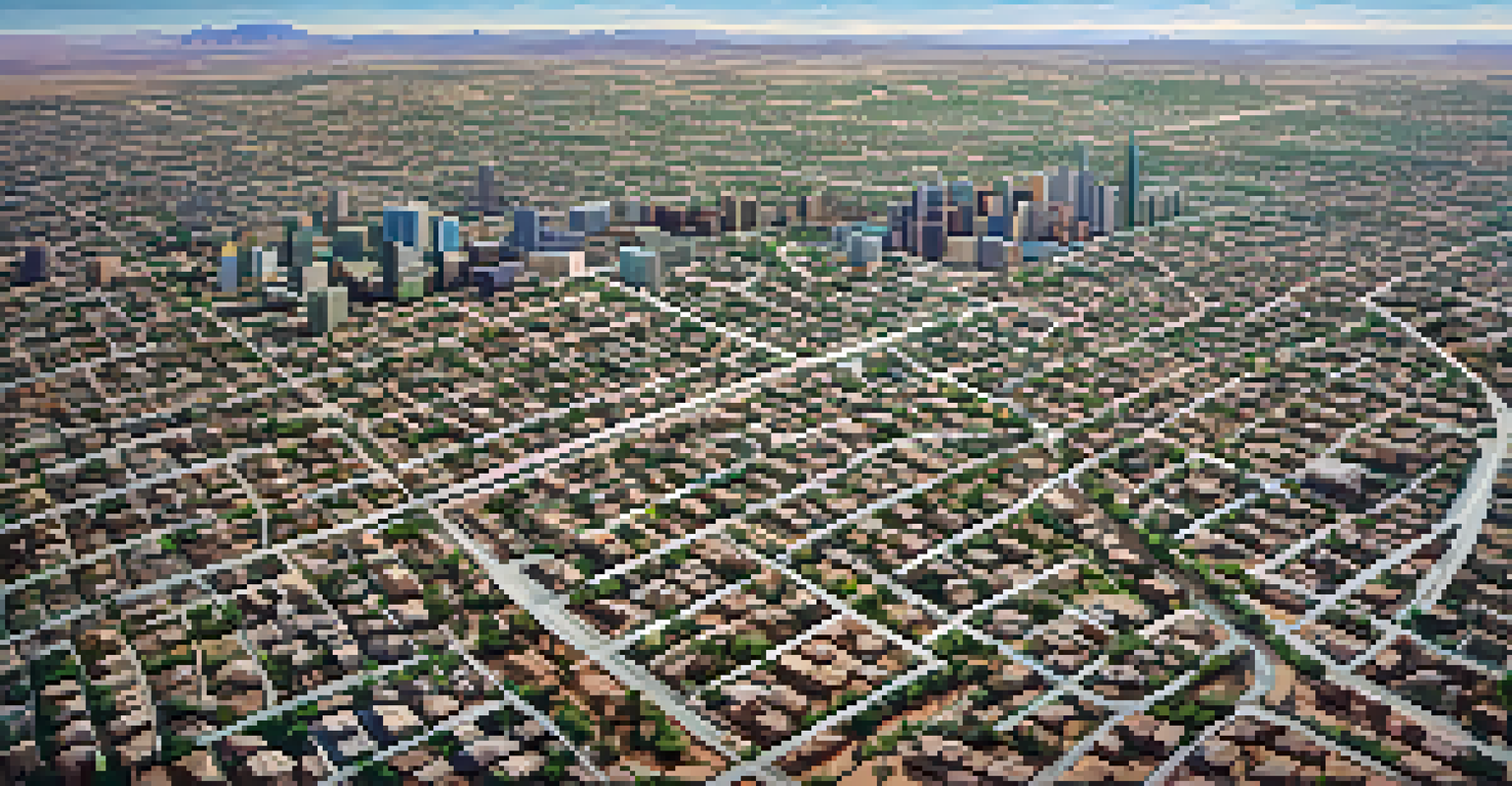Biodiversity Decline in Arizona: Urbanization's Role Explained

Understanding Biodiversity and Its Importance
Biodiversity refers to the variety of life forms on Earth, from plants and animals to microorganisms. It's crucial for ecosystem health, providing essential services like clean air, water, and food. In Arizona, rich ecosystems support diverse species, making the state a vibrant natural treasure.
Biodiversity is the foundation of ecosystem services, which are essential for human well-being.
When biodiversity thrives, it enhances resilience against environmental changes, diseases, and climate impacts. For example, diverse plant life can better withstand droughts, a common challenge in Arizona. This interconnectedness highlights why protecting biodiversity is vital for our well-being and the planet's future.
Sadly, biodiversity is declining globally, and Arizona is no exception. Urbanization plays a significant role in this decline, disrupting habitats and threatening the delicate balance of local ecosystems.
The Urbanization Trend in Arizona
Urbanization refers to the increasing number of people living in urban areas, often leading to the expansion of cities. In Arizona, cities like Phoenix and Tucson have seen rapid growth over the past few decades, attracting residents with job opportunities and amenities. However, this expansion often comes at a cost to the surrounding natural habitats.

As cities grow, they consume land that was once home to diverse flora and fauna. This encroachment can fragment habitats, making it difficult for species to thrive. For instance, the expansion of housing developments can lead to the displacement of native wildlife, causing a ripple effect in the ecosystem.
Biodiversity is crucial for ecosystems
The variety of life forms supports essential services like clean air, water, and food, emphasizing its importance for ecosystem health.
Moreover, urban areas typically introduce pollution, noise, and invasive species, further threatening local biodiversity. Understanding these trends is crucial in addressing the impact of urbanization on Arizona's unique ecosystems.
Habitat Loss: A Direct Consequence of Urbanization
One of the most significant impacts of urbanization is habitat loss. As land is developed for homes, roads, and businesses, natural habitats are destroyed or altered beyond recognition. In Arizona, desert habitats, which are already fragile, are particularly vulnerable to such changes.
The environment is where we all meet; where we all have a mutual interest; it is the one thing all of us share.
Habitat loss disrupts the living conditions that many species rely on for survival. For example, the decline of the Sonoran Desert tortoise population has been linked to urban sprawl, as their habitats are increasingly encroached upon. Without suitable environments, many species struggle to adapt, leading to declines in their populations.
The loss of habitat not only affects the species directly impacted but also disrupts the entire ecosystem, leading to a cascade of negative effects. Protecting remaining habitats is essential for preserving biodiversity in Arizona.
The Role of Invasive Species in Urban Areas
Urbanization often paves the way for invasive species to flourish. These non-native species can outcompete local flora and fauna, leading to further biodiversity decline. For instance, species like the Buffelgrass, which thrives in disturbed areas, can quickly take over and outcompete native plants.
Invasive species disrupt the food chain, as they can provide lower quality habitat and food sources for native wildlife. This can lead to declines in native species populations, exacerbating the overall biodiversity crisis. In Arizona, managing invasive species is a critical component of conservation efforts.
Urbanization leads to habitat loss
As cities expand, natural habitats are destroyed or altered, threatening local wildlife and disrupting ecosystem balance.
The challenge is that urban areas tend to create ideal conditions for these invaders, making it harder for native species to regain their footing. Effective management strategies are essential to mitigate their impact and protect Arizona's unique ecosystems.
Climate Change: An Urbanization-Driven Challenge
Climate change is another pressing issue exacerbated by urbanization. Cities tend to generate heat, leading to the urban heat island effect, where urban areas become significantly warmer than their rural surroundings. This temperature increase can stress local wildlife and plant life, making survival even more challenging.
Furthermore, climate change alters weather patterns, affecting the availability of water, which is already a scarce resource in Arizona. Many species are ill-equipped to adapt to these rapid changes, leading to shifts in populations and, in some cases, extinction.
By addressing urbanization's role in climate change, we can work towards solutions that promote sustainability and protect biodiversity. Encouraging green spaces within urban areas can help mitigate some of these impacts and provide refuge for local species.
Community Efforts to Combat Biodiversity Decline
Communities across Arizona are recognizing the importance of biodiversity and are taking steps to address its decline. Local organizations and residents are involved in conservation efforts, such as habitat restoration projects and invasive species management. These grassroots initiatives can significantly impact preserving local ecosystems.
For example, community gardens and urban green spaces not only beautify neighborhoods but also provide habitats for local wildlife. Engaging residents in these initiatives fosters a sense of stewardship and responsibility towards the environment.
Community efforts boost conservation
Local organizations and residents are actively engaging in initiatives like habitat restoration and invasive species management to combat biodiversity decline.
Additionally, educational programs help raise awareness about the importance of biodiversity, encouraging more people to participate in conservation efforts. By working together, communities can play a vital role in reversing the trend of biodiversity decline in Arizona.
The Path Forward: Sustainable Urban Planning
To address the biodiversity decline driven by urbanization, sustainable urban planning is essential. This approach focuses on creating cities that work in harmony with nature, rather than against it. By integrating green spaces, wildlife corridors, and sustainable infrastructure, we can help preserve biodiversity while accommodating growth.
For instance, cities can implement policies that prioritize the protection of natural habitats during development projects. Encouraging the use of native plants in landscaping can also provide better support for local wildlife. These strategies not only benefit the environment but also enhance the quality of life for residents.

Ultimately, a collective commitment to sustainable practices can lead to a brighter future for Arizona's ecosystems. By valuing biodiversity as an integral part of urban life, we can foster a healthier environment for all.